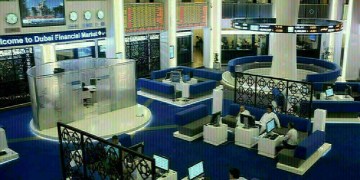Relief takes many forms and last week’s relief rally after the minutes of the Fed policy meeting from early May were released reflected the simple-mindedness of stock market investors who were braced for worse news.
The minutes showed that the policymakers remain flexible, with some even suggesting the Federal Open Market Committee could adjust its planned restrictive stance later this year.
Atlanta Fed chief Raphael Bostic is one of those urging caution and suggested last week that a “pause” in rate hikes might be in order by September. Even firetrucks slow down at intersections, he said in a colorful metaphor.
Fed reporters, faithful to their sources, blared headlines about the determination of policymakers to tame inflation. No relief for these reporters, just a belief that wishing will make it so.
Fed Chairman Jerome Powell is cheerleading these efforts. He said earlier this month:
“This is not a time for tremendously nuanced readings of inflation. We need to see inflation coming down in a convincing way. Until we do, we’ll keep going.”
The core personal consumption expenditure index for April also provided some relief, coming in on target at a 4.9% gain on the year, down from 5.2% in March.
The core PCE index, the inflation measure used by policymakers, conveniently ignores food and energy prices because, in the logic of economists, these volatile prices don’t tell you where inflation is really going.
One has to be fairly optimistic, however, to think that inflation will moderate significantly, whether in response to Fed action or for any other reason, and no matter how you measure it.
An extremely tight labor market, soaring energy and food prices, and continuing supply-chain disruptions point to months of sustained high inflation.
Dr. Doom, for one, is not optimistic. Nouriel Roubini, who earned his nickname over pessimism in 2006 about the US housing market, is also pessimistic about the chances of the soft landing touted by Powell and company in the current situation. In an article for Project Syndicate, Roubini wrote last week:
“The degree of monetary-policy tightening that is needed will inevitably cause a hard landing, in the form of a recession and higher unemployment. A soft-landing scenario, therefore, looks like wishful thinking.”
One scenario Roubini considers likely is that central bankers will “wimp out” once they see the cost of actually getting inflation down. In that scenario, stagflation will be the outcome—a recession with high inflation and unanchored inflation expectations.
Diverging ECB Policy Path
The European Central Bank, meanwhile, suggested a significant divergence from the Fed’s policy path by indicating it would not start running off its bond portfolio until next year.
This came from no less than Klaas Knot, the uber-hawk head of the Dutch central bank. He noted last week at the World Economic Forum in Davos:
“That will imply that we will have a large balance sheet for still some time to come.”
The eurozone’s central bank is caught in the peculiar hybrid nature of union. There is a single currency and single monetary policy, but 19 governments issuing sovereign debt.
All of them sold a lot of bonds during the pandemic and the ECB bought most of them. It is a type of accommodation the central bank cannot easily remove without causing problems for the weaker members of the zone.
Italy’s government debt, for instance, is now 150% of GDP, and the EU has suspended the putative limit of 60% for a third year in succession because that is simply not attainable.
This limits the ECB’s toolkit to rate hikes, and Knot is among those calling for a half-point hike in July. That is still an outlier, as the consensus rather sees quarter-point hikes in July, September, and December.
Eurozone inflation for April has been revised downward to 7.4% from a preliminary 7.5%, but economists expect another new record of 7.7% for May, which will pressure the ECB to act.
Source: Investing.com


























